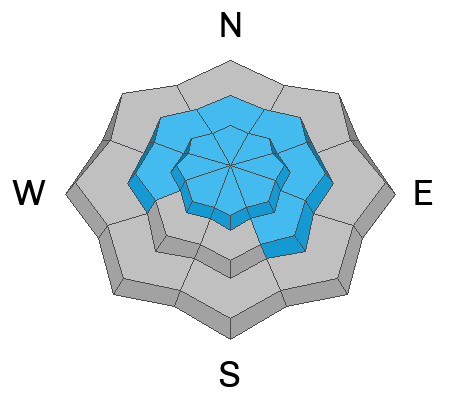A new storm has moved into the area, and it's currently snowing hard in the mountains and raining in the valley. Though somewhat improved by last week's shallow snowfall, riding conditions should benefit greatly from the coming week's forecast storms. It looks like winter is making a congenial return with strong winds, moderate snowfall, and storminess through the work week. The best riding conditions today are on sheltered low-angle slopes where the new snow is stacking up, and there's less chance to hit last week's crusty surface. Conditions should continue to improve throughout the week.
On upper and mid-elevation slopes steeper than 30°, people could trigger wind slab avalanches of drifted new snow or loose snow avalanches. These both might run faster and further than expected on a stout melt-freeze crust from last week's warm spell.
The wind is blowing from the south this morning at 41 mph with gusts up to 62 mph at the 9700' CSI Logan Peak weather station, and it's 24° F. On Paris Peak at 9500', it’s 21° F, and the wind is blowing 4 mph from the south. The Tony Grove Snotel at 8400' reports 27° F and 1-2 inches of new snow in the last 24 hours. The station reports 76 inches of total snow, containing 116% of the average SWE (Snow Water Equivalent).
Expect stormy conditions today with strong winds from the south and 5-9 inches of snowfall. High temperatures at 8500' are expected to be around 33° F. Snow will continue through the night into Tuesday when we'll have a brief lull before the next system moves into the area Tuesday night through Thursday.
On Friday, we received reports of a few shallow avalanches of heavy new snow in the northern part of the zone. A snowboarder triggered a 2" x 40' soft slab that ran into trees and piled up a couple of feet deep, and skiers in Bloomington Canyon triggered a few sluffs running further than expected on the widespread melt-freeze crust. No avalanches were reported yesterday.
Check out local observations and avalanches
HERE.









